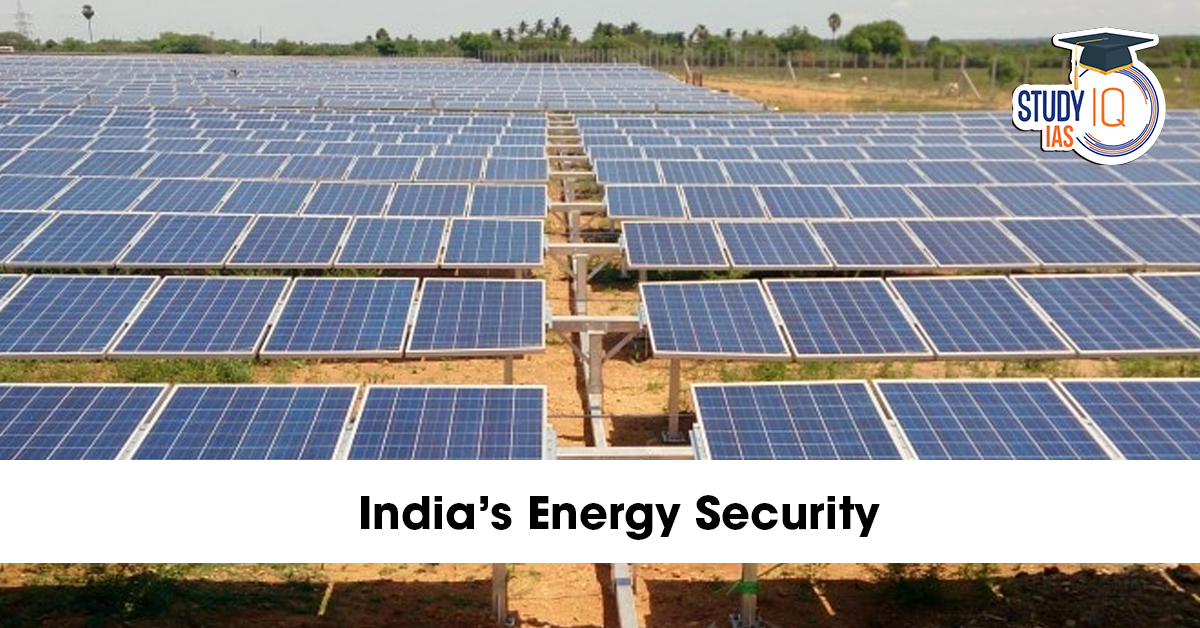Table of Contents
Context: India’s energy security faces risks due to overdependence on select countries like Russia, prompting diversification efforts through renewables, strategic partnerships, and domestic production to ensure long-term resilience.
India’s Dependency on Foreign Countries for Energy Sector
- Oil: India imports nearly 85% of its crude oil
- Top suppliers:
- Russia (~36% of India’s imports as of 2025)
- Iraq, Saudi Arabia, UAE (traditional suppliers from West Asia)
- Shift to Russia was driven by discounted crude post-Ukraine war.
- Top suppliers:
- Natural Gas (LNG): Around 50% of India’s gas needs are met through imports.
- Key suppliers: Qatar, U.S., Australia, Russia
- Coal: Despite being a major coal producer, India imports coal for quality and blending reasons.
- Main sources: Indonesia, Australia, South Africa
- Renewables & Uranium: Uranium imports come from Kazakhstan, Canada, and Australia for nuclear power.
Current Vulnerabilities in Energy Security and Diversification
- Overdependence on a Few Countries: Russia has become a dominant supplier of oil — a single-point risk if U.S. imposes secondary sanctions.
- Geopolitical Volatility: West Asian instability, Russian sanctions, or U.S. trade policy shifts can disrupt energy flow or increase costs.
- Transport & Supply Chain Bottlenecks: Shipping lane tensions (e.g., Red Sea, Strait of Hormuz) can delay or reroute energy supplies.
- Price Volatility: Sudden geopolitical escalations can spike global crude prices and strain India’s import bill and Current Account Deficit (CAD).
- Slow Transition to Renewables: Although installed capacity has grown, actual grid penetration and storage solutions are lagging.
Steps Taken by India to Diversify Energy Sources
Strategic and Policy Interventions
- International Energy Partnerships:
- Long-term LNG deals with Qatar and the U.S..
- Strategic petroleum reserve (SPR) expansion.
- Indian Oil’s diversification into Guyana, Brazil, and Africa.
- Mission Innovation 2.0: India co-leads this global alliance for clean energy R&D.
Renewable Energy Push
- National Solar Mission:
- Target: 500 GW non-fossil capacity by 2030.
- India now ranks among the top 5 countries in solar installation.
- Green Hydrogen Mission: Outlay of ₹19,744 crore to make India a global hub for green hydrogen.
- PLI schemes for Solar Modules and Battery Storage: Encouraging domestic manufacturing to reduce import dependence.
- Offshore Wind Policy, Bioenergy Program, Hydrogen Valley projects – rolled out to attract investment and scale up clean energy.
EV and Energy Efficiency Policies
- FAME II, Battery Swapping Policy, State EV policies to reduce oil usage in transport.
- Perform Achieve and Trade (PAT) scheme – improves industrial energy efficiency.
How India Can Further Diversify Its Energy Sources
- Geographical Diversification:
- Widen oil sourcing: Strengthen ties with Latin America (Brazil, Venezuela), Africa (Nigeria, Angola), Southeast Asia (Malaysia).
- More LNG terminals: Increase import capacity from Australia, Mozambique.
- Technological & Infrastructure Investments: Invest in energy storage technologies and smart grids.
- Expand nuclear power capacity with safer, modular reactors (SMRs).
- Decentralized Renewable Projects: Promote rooftop solar, community-level bioenergy and microgrids, especially in rural areas.
- Regional Energy Integration: Tap cross-border energy trade with Nepal (hydro), Bhutan, and Bangladesh.
- Build regional power markets in South Asia.
- Strategic Reserves Expansion: Increase Strategic Petroleum Reserves to buffer against sudden shocks.
| Recently in the news |
| ➔ Petroleum Minister Hardeep Singh Puri had held that it is a “matter of time” before India finds a Guyana-like oil basin in the Andaman region. |


 Out-of-Pocket Health Expenditure, Reason...
Out-of-Pocket Health Expenditure, Reason...
 Treasury Bills (T-bills): RBI Cuts Holdi...
Treasury Bills (T-bills): RBI Cuts Holdi...
 Fisheries Sector in India, Current Statu...
Fisheries Sector in India, Current Statu...

























